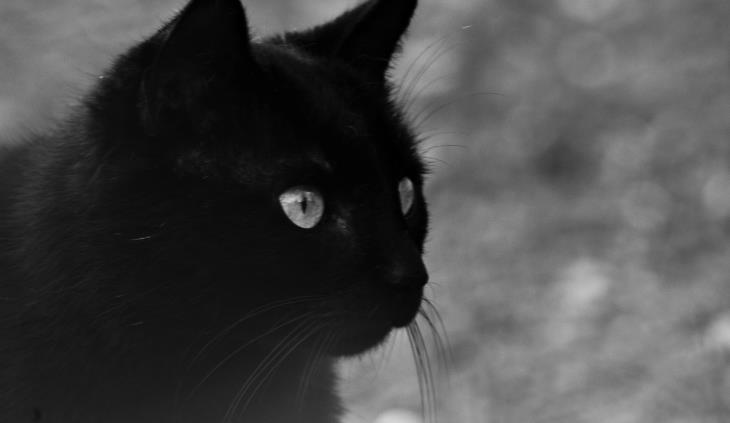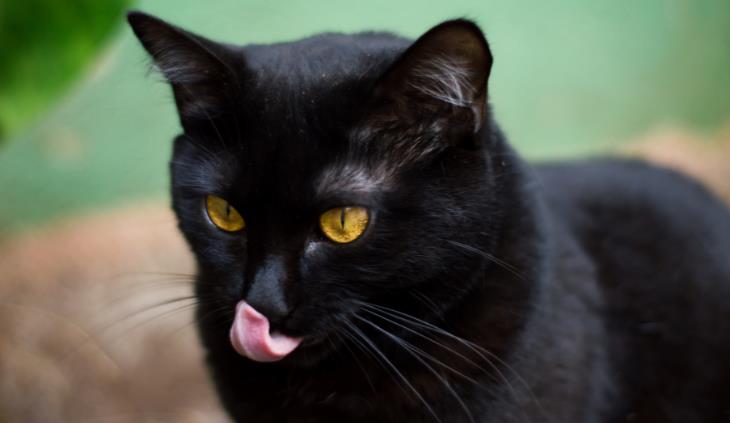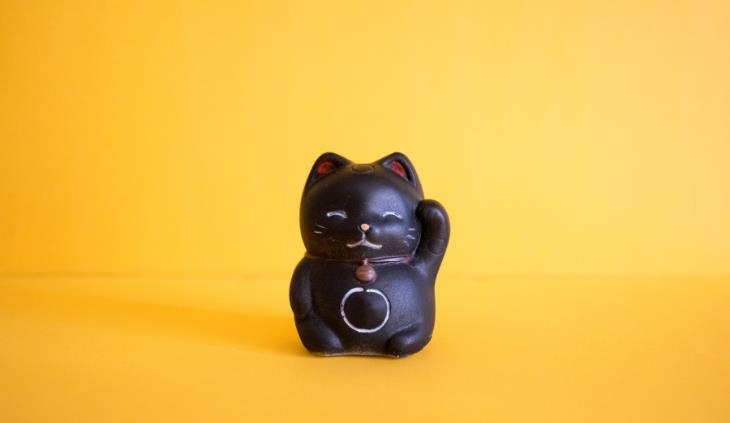

In ancient Egypt, all cats were considered divine beings. Egyptians believed that all gods and goddesses can become animals. Only one goddess could become a cat - Bastet, the lioness warrior goddess, protector of the sun, goddess of fertility, femininity, and guardian against evil spirits and contagious diseases.
Cats in ancient Egypt were considered magical, bringing good luck to their owners. The wealthy even adorned them with jewels. When a cat died, the owner would shave his or her eyebrows in mourning. They would mourn till their eyebrows grew back.
In Greek mythology, it is said that Hera, Zeus‘s wife, turned her servant Galinthias into a black cat in a feat of anger. Galinthias then went on to serve Hecate, the witch goddess of magic and spells. He was her pet and familiar, a word later used to describe an animal serving a witch.
In Norse mythology, Freya, the goddess of love, beauty, and fertility rides a chariot pulled by two black cats.

A few centuries into the Dark Ages, in the 13th century, there was a violent turning point in people's attitude to black cats. In June of 1233, an official document released by the pope declared cats an incarnation of Satan himself. This marks the start of the inquisition and Christian witch hunts backed by the church. This wave of inquisition started to demolish Luciferian movements in Germany but quickly spread to the rest of Europe via Puritan colonizers.
At the time, witches were the pre-Christian pagan practitioners of the Wiccan religion. Much like in fairytales, there was a time when the two religions lived happily side-by-side, but the church soon marked Wicca as the competing religion and started thinking of ways to attract more believers.
Related: 10 Fun Facts About Black Cats
Paganism is very connected to the natural world, so the link between humans and animals as a symbol of Wicca was rendered devilish. Cats are known to disrespect authority, and black cats, in particular, were also considered the best hunters since they have natural nocturnal camouflage. This made them an easy target to become enemies of the church.
Once the belief was set in, folklore stories began emerging. According to one story, a man and his son came across a black cat. They started throwing rocks at it, but the cat ran into a woman’s house who was suspected of being a witch. They threw rocks at her too. The next day, when she was walking around town bruised and limping, the townspeople could only conclude that the cat must’ve been the woman in disguise.

With black cats being perceived as the enemies of the church, it was only natural they would be blamed for spreading plagues too. Unfortunately, we now know that the persecution and killing of cats only helped spread the plague, as cats were the ones hunting and killing rodents – the real culprits spreading diseases.
The hatred towards black cats grew and spread outside of Europe. In Scottish folklore, there is a fairy known as the king of cats. This is a giant black cat who can steal a dead person’s soul before the gods can reach it.
Since the superstitions are not anchored in any written text, there are variations of beliefs associated with black cats' misfortune. In Germany, for example, when a cat passes you by from right to left, it is said to bring bad luck, but a cat crossing the street from left to right can bring good luck. In much the same manner, pirates believed that a cat coming toward you meant bad luck, while a cat walking away from you is a good omen. But the worst omen of them all was when a black cat walked onto a ship and then left. Then, the ship would sink the next time it set out to sea.

You may be surprised to learn some cultures and religions regard black cats as symbols of prosperity and protection.
The Japanese believe that black cats attract suitors. The famous lucky cat with one waving paw is usually golden, but it can be white or black too. In 19th-century Europe, the Irish believed that a black cat on your porch was good luck. The English used to give black cats to brides on their wedding day for good fortune in their marriage.
Some sailors kept black cats on board and at home for protection. In Italy, a sneezing black cat signals good luck, and in Latvia, a lone black kitten symbolizes a good harvest. And finally, in France, peasants used to believe that if a black cat was released at a crossroads where five roads intersect, the cat would choose the road to good fortune.